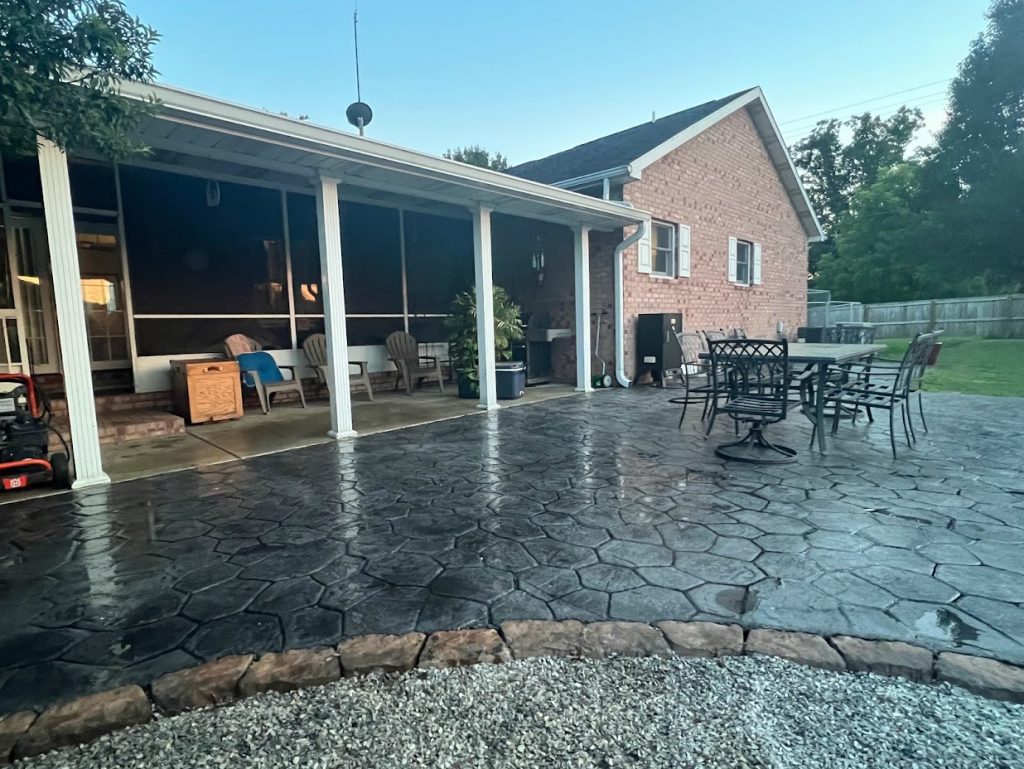
Painting concrete surfaces in Barboursville, WV, such as basement floors, garage floors, or concrete walls, can enhance their appearance, protect them from moisture and stains, and extend their lifespan. Here’s a comprehensive guide on how to paint concrete, including directions, materials to use, and application techniques:
1. Surface Preparation:
Before painting concrete, proper surface preparation is essential to ensure adhesion and long-lasting results. Follow these steps:
a. Clean the Surface:
- Remove all dirt, dust, grease, oil, and other contaminants from the concrete surface. Sweep the area thoroughly and use a degreaser or concrete cleaner to remove stubborn stains.
- Rinse the surface with water and allow it to dry completely before proceeding. b. Repair Cracks and Holes:
- Fill any cracks, holes, or divots in the concrete surface with a suitable concrete patching compound. Use a trowel to smooth the patch and ensure it is level with the surrounding area.
- Allow the patching compound to cure according to the manufacturer’s instructions before painting. c. Etch the Surface (Optional):
- If the concrete surface is smooth or non-porous, consider etching it to improve adhesion. Use an etching solution or muriatic acid diluted with water to etch the surface.
- Follow the manufacturer’s instructions for mixing and applying the etching solution, and wear appropriate protective gear, including gloves and goggles.
2. Gather Materials and Tools:
Before painting concrete, gather the necessary materials and tools. Here’s what you’ll need:
- Concrete primer or sealer
- Concrete paint or epoxy paint
- Paint roller with extension pole
- Paintbrush (for cutting in)
- Paint tray
- Painter’s tape
- Drop cloths or plastic sheeting
- Concrete etching solution or muriatic acid (if etching)
- Bucket
- Scrub brush
- Safety gear (gloves, goggles, mask)
3. Apply Primer or Sealer:
Before painting, it’s essential to apply a primer or sealer to the concrete surface to improve adhesion and provide a uniform base for the paint. Follow these steps:
a. Choose the Right Primer:
- Select a primer or sealer specifically designed for use on concrete surfaces. Look for products labeled as concrete primers or masonry sealers. b. Mix and Apply the Primer:
- Stir the primer thoroughly before application to ensure uniform consistency. Pour the primer into a paint tray.
- Use a paint roller to apply the primer to the concrete surface, working in small sections and overlapping each stroke slightly.
- Use a paintbrush to cut in around the edges and corners of the area being painted. c. Allow the Primer to Dry:
- Allow the primer to dry completely according to the manufacturer’s instructions before proceeding with the paint application. This typically takes several hours to overnight, depending on the product and environmental conditions.
4. Paint the Concrete:
Once the primer has dried, you’re ready to paint the concrete surface. Follow these steps for successful paint application:
a. Choose the Right Paint:
- Select a high-quality concrete paint or epoxy paint suitable for the intended use and conditions. Consider factors such as durability, finish (glossy or matte), and color options. b. Mix the Paint (if necessary):
- If using a two-part epoxy paint, follow the manufacturer’s instructions for mixing the paint components. Ensure thorough mixing to activate the epoxy properly. c. Apply the Paint:
- Pour the paint into a clean paint tray and use a paint roller to apply it to the concrete surface. Work in small sections, starting from one corner and working your way outward.
- Use a brush to cut in around the edges and corners of the area being painted, ensuring uniform coverage along the edges. d. Apply Multiple Coats (if necessary):
- Depending on the desired color and coverage, you may need to apply multiple coats of paint. Allow each coat to dry completely before applying the next one, following the manufacturer’s recommended drying times.
5. Allow the Paint to Cure:
After painting, allow the paint to cure fully before subjecting the surface to foot traffic or heavy use. Follow the manufacturer’s instructions for curing times, which typically range from 24 to 72 hours.
6. Clean Up:
Once the paint has dried, clean up any paint spills or drips using soap and water. Remove painter’s tape and drop cloths carefully to avoid disturbing the freshly painted surface.
7. Maintenance and Care:
To prolong the life of your painted concrete surface, practice regular maintenance and care. Avoid dragging heavy objects across the surface, and clean up spills promptly to prevent staining. Periodically inspect the painted surface for signs of wear or damage and touch up as needed.
Estimated Cost:
The cost of painting a concrete surface in one room in Barboursville, WV, can vary depending on factors such as the size of the room, the condition of the concrete, the quality of paint used, and whether professional labor is involved. On average, you can expect to pay between $15 to $20 for materials and labor to paint a standard-sized room with a concrete floor or walls. This cost may include primer, paint, supplies, and labor for surface preparation and application.
By following these steps and guidelines, you can successfully paint concrete surfaces in your home in Barboursville, WV, and achieve a durable, attractive finish that enhances your living space.
Jeff
